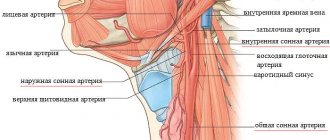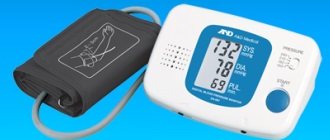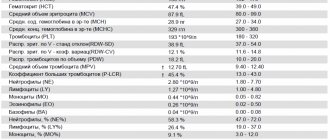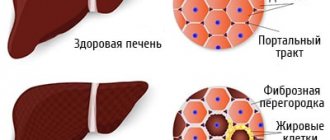Over the past few years, everyone has been talking about how important it is to monitor your heart rate while playing sports, running at a low heart rate has become fashionable, and heart rate monitors are being released in the form of very cute designer gadgets and are built into smart watches. We'll tell you why monitoring your heart rate is really a good idea.
Short answer : Heart rate measurements tell us how the heart is working at any given moment, the main goal here is to avoid too much stress and overwork, which can lead to health problems. In addition, taking into account your heart rate zones, you can make your workout more effective.
What are pulse zones?
So, the pulse tells us the heart rate. In order to measure it, it is not necessary to use special gadgets - in ordinary life it will be enough to count the number of heart beats per minute, armed with a stopwatch.
At times of stress, which includes physical activity, the heart rate increases. This occurs due to the fact that the body has an additional need for oxygen, which the blood delivers to all organs and tissues.
Depending on the speed of heart contraction, several so-called pulse zones are distinguished. There are many classifications, but they usually include 4 to 8 zones ranging from resting heart rate to maximum heart rate.
The maximum frequency varies depending on age; quite roughly it can be determined by the formula “220 minus your age”: for example, for twenty-year-olds, the maximum heart rate is 200 beats per minute, and for people 50 years old - 170. Further classification of zones is based on this indicator. A pulse at 50-60 percent of the maximum heart rate is called very light, light - 60-70 percent, medium - from 70 to 80, and, finally, heavy - 80-90.
You need to understand that in any case, such a formula is only theoretical. In each individual case, you can establish the maximum heart rate more accurately using special tests, however, if you have just started your training, at first this conditional classification will be enough.
Why should you monitor your heart rate during exercise?
The main reason is that such control allows you to avoid health problems. First of all, there is too much stress on the heart during high-intensity training. Achieving high heart rate values - more than 80 percent of the maximum - is acceptable during strength training, but only for a short period of time (from 20-30 seconds for beginners and up to 5 minutes for experienced athletes).
When you see that the pulse is approaching a heavy one, you can pause in time and avoid unpleasant consequences such as dizziness and nausea, and in addition, prevent more serious dangers. In particular, recent research suggests that training at a heavy heart rate (more than 85 percent of maximum) increases the risk of sudden cardiac arrest, atrial fibrillation and heart attack.
It’s clear with the maximum values, but how else can you use the information from the heart rate monitor?
Beyond basic safety, measuring your heart rate can help make your workouts more effective. For example, if your goal is to lose excess weight, know that this process occurs most effectively in the light heart rate zone (60-70 percent of the maximum). If your goal is to develop endurance, stick to average heart rates. This zone is suitable for basic anaerobic exercise - training on machines and exercises with weights. And finally, a high heart rate signals that you have reached your maximum load and it’s time to stop and rest.
Basic characteristics of pulse
Doctors who specialize in the human cardiovascular system note that the pulse can be characterized by several important criteria. It is on their basis that conclusions can be drawn about the state of human health.
Important properties of pulse:
- rhythm - oscillation of the walls of the arteries occurs at equal intervals of time (if the intervals are different in time, this indicates pathology);
- frequency - the number of heart beats per minute (a frequent pulse occurs in infants, a moderate pulse in athletes at rest in good health, a rare pulse occurs in the elderly, as well as in various pathologies);
- filling - the volume of blood that is ejected from the heart chambers into the arteries (“full pulse” - the arteries are completely filled and the vibrations are more noticeable; with an “empty pulse” it may not be palpable at all);
- tension - the force of pressing on the artery for qualitative and quantitative study of the pulse (the indicator depends on the level of systolic pressure);
- value - associated with filling and tension (a small pulse indicates a narrowing of the aorta or tachycardia, a large one - about overstrain of the blood vessels, thread-like - in states of shock and bleeding, intermittent - about pathologies of the heart muscle);
- form - can only be determined instrumentally (it can be slow, fast and dicrotic).
When low heart rate is a symptom of disease
A low heart rate in people actively involved in sports may be a sign of malaise if, outside of movement, the following are present:
- prostration;
- low pressure;
- dizziness;
- feeling of lack of air;
- pain and feeling of stiffness behind the sternum;
- anxiety;
- inability to concentrate;
- headache;
- vision problems;
- panic attacks.
If at least some of the listed signs occur, it is necessary to be examined. It is possible that sport led to the development of bradycardia. This is a slow heartbeat, in which the nutrition of the organ is disrupted, which means the supply of oxygen to the tissues. Bradycardia is not a disease, but a symptom that can be present in many pathologies, not only cardiovascular ones.
The problem requires special attention when it comes to teenagers who are seriously interested in sports. Their cardiovascular system often does not keep pace with the growth of other tissues and organs. As a result, blood circulation and nutrition of the myocardium are disrupted, which can lead to serious illness and the need to completely stop training.
What is the pulse like?
There are different types of beating. This must be taken into account when studying the heart rate of athletes, which is somewhat different from the heart rate of ordinary people.
Types of pulse:
- Arterial. Important in diagnosing the basic characteristics of the pulse (frequency, rhythm, filling, tension, size and shape);
- Capillary (Quincke pulse) - in healthy people, blood flows continuously through the capillaries, so it cannot be palpated. Detection of such a pulse is a deviation from the norm.
- Venous - determined by a sphygmogram or venogram and can be characterized as positive or negative.
Methods for diagnosing the condition
You should first address the problem to a general practitioner, who will refer you to a cardiologist. To identify bradycardia and its cause:
- interview the patient to find out the details of his condition, under what circumstances it worsens or improves, what exactly worries him;
- prescribe blood and urine tests to detect or exclude an inflammatory process, determine the amount of substances that make up biological fluids;
- conduct an examination and measure the pulse to determine its fullness, frequency, and preliminary assess the condition of the heart and blood vessels;
- they do an ECG, which makes it possible to identify the functionality of the “human engine”, the electrical activity of its cells, and rhythm characteristics;
- carry out a Holter study, which reveals the peculiarities of the organ’s functioning under different types of load experienced during the day;
- perform an ultrasound of the heart to identify its size, integrity, structure and volume of components (chambers, walls, coronary vessels, pericardium, etc.), detect murmurs, infectious lesions;
- a stress load test is prescribed, in which it becomes possible to assess organ function during different types of physical activity (walking, running, cycling, etc.).
Normal heart rate for an average person
In a healthy adult at rest, the normal heart rate ranges from 60 to 80 beats per minute. The pulse of professional athletes should be the same during breaks between physical activity. Its indicators increase only during sports.
The frequency depends on the time of day and the position at which it is measured. In a lying position, the heart rate is usually lower than in a sitting or standing position. To notice some deviations from the norm, it is worth measuring the pulse in one position and at a certain, identical time for several days.
Average heart rate depending on a person’s age:
- newborn children – 140 beats/min.;
- children under 2 years old – 100 beats/min;
- teenagers (up to 14 years old) - 80 beats/min.;
- women – 60–80 beats/min;
- men – 65–90 beats/min;
- elderly people – 65 beats/min.
What are the dangers of bradycardia?
Even athletic people with a heart rate of 40 beats per minute should undergo regular preventive examinations to study the condition of their heart. Otherwise, asymptomatic bradycardia can lead to serious consequences:
- cerebrovascular accident;
- the occurrence of chronic heart failure;
- development of ischemic heart disease;
- myocardial infarction;
- cardiomyopathy;
- insufficiency of heart valves and the development of other defects requiring surgical intervention.
In addition, the syndrome increases the likelihood of sudden cardiac arrest.
A more moderate heart rate for those involved in sports is normal. But it should not fall below a certain value and be accompanied by a deterioration in well-being. If this happens, you need at least an examination by a doctor and a change in your training system.
What is the heart rate of athletes?
If for an ordinary adult a heart rate of 60 to 90 beats per minute is considered normal, then for athletes these indicators may be slightly different. This primarily depends on the type of sport, as well as other factors.
What does an athlete’s heart rate depend on:
- A person who engages in speed-strength sports has a higher heart rate. For those athletes whose occupation is aimed at developing endurance, the heart rate is slightly reduced or equal to the heart rate of an ordinary person.
- Beginner athletes have a higher heart rate than professionals, regardless of the type of sport. And also with age, heart rate tends to decrease. The highest indicators are among athletes under 15 years of age who engage in speed-strength sports. For them, the norm is up to 80 beats/min. For professionals over 30+ who rely on endurance, the norm is up to 50 beats/min.
- In female athletes, the heart rate is on average 10 beats per minute less than in athletes of the stronger sex. In the “lying down” position, the heart rate also decreases by 10 divisions.
- Bradycardia is diagnosed in an ordinary person if his heart rate is less than 60 beats/min. For skiers, marathon runners, and cyclists, a heart rate of 40–50 beats per minute is considered normal, since the body itself goes into economy mode. However, when the rate is less than 40 beats/min. or more than 90 beats/min. You should consult a doctor, this indicates pathologies in the functioning of the heart muscle.
- To ensure increased blood circulation in the body, an athlete’s heart can sharply increase the number of beats per minute. If previously it was believed that 180 beats/min is an extremely high heart rate, today professional athletes have a heart rate in the range of 200–220 beats/min. does not have negative consequences for the body. For an ordinary person, such a sharp increase can lead to overexertion.
- In athletes who lift weights, the heart rate can increase to 120-135 beats per minute, but it is important to monitor your breathing, as overexertion may occur.
It is also worth understanding that an athlete’s heart rate depends not only on physical activity, but also on diet, lifestyle and other related factors.
Treatment for bradycardia
Therapy for bradycardia, which is not bothersome by other manifestations, consists of correcting physical activity. It could be:
- Its reduction. You will have to reduce activity if it turns out that the heart cannot cope with the work due to the high intensity of exercise. This may be necessary with age, or when pathologies are discovered that do not allow the presence of professional sports in life.
- Changing the training system. They should begin with a gradual increase in load, that is, with warm-up exercises that prepare the body for more active work. This way, it is possible to relieve the heart of stress, and as a result it functions more stably.
To eliminate the symptom, it is important to stop smoking and drinking too much alcohol. Both bad habits also put a strain on the heart and interfere with the functioning of blood vessels.
Sometimes it is necessary to use drugs from the groups of sympathomimetics and anticholinergic blockers, which are prescribed by a doctor. In case of severe bradycardia caused by structural changes in the heart, installation of a pacemaker is indicated.
Why do differences occur?
The differences between the heart rate of an ordinary person and the heart rate of an athlete are due to the fact that a person performs moderate or heavy physical activity on a regular basis for a long time. This leads to slightly modified blood pressure and pulse indicators.
Swimmers, marathon runners, stayers, sprinters, skiers and representatives of other sports that focus on endurance experience the following changes:
- the heart muscle contracts with greater force;
- the number of blood vessels in the heart increases;
- the walls of the heart thicken and the volume of cavities increases;
- pulse and blood pressure decrease at rest;
- the number of blood vessels increases and their condition improves.
With regular exercise, blood circulation becomes more active, but the heart learns to work more economically. A slightly slower heart rate ensures good metabolism and better nutrition for the whole body. But with age, low heart rate can lead to pathologies such as coronary disease, heart failure and others. Therefore, there are no former athletes and it is important to always maintain physical activity, although not so intense.
Matters of the Heart - Exercise
So what should beginners do? First, you need to undergo a medical examination, during which a sports medicine doctor will determine your state of health and the level of possible stress, and only then proceed to training. The first to react to the load are the vessels, which carry out the mission of delivering nutrients to the tissues and evacuating substances used for muscle activity, and the heart - so that it has time to provide this process with the appropriate dynamics.
Training will be useful if:
- for a positive effect from training, each session should last at least 40 minutes;
- the interval between unidirectional training will be about 48 hours - during this time the body will have time to recover;
- training will be useful if you use multidirectional loads (cardio training and strength training);
- the effort applied must correspond to the level of training.
Determining the maximum heart rate
Important aspects when playing sports are determining the athlete’s normal heart rate and its maximum values.
The general formula by which you can calculate the maximum allowable heart rate is as follows: heart rate (max) = 220 – age.
It is with the help of such calculations that contractions under various physical activities are determined:
- Warm-up (warm-up before or recovery after training) - the heart rate should be up to 60% of the maximum.
- Training - heart rate is up to 70% of the maximum heart rate. At this time, up to 85% of calories are burned.
- Cardio exercise (aerobics) – up to 80% of maximum heart rate. At this time, the body actively consumes oxygen and only 50% of excess deposits are burned.
- Work at the limit (intensive training) - up to 100% of the maximum heart rate, but at this pace it is worth working only for a limited and short period of time, only professional athletes can afford such loads (for example, in competitions).
Fitness-related atrial fibrillation and atrial flutter
Most cases of atrial fibrillation and flutter occur in older people with coronary artery disease, valvular heart disease, or other heart conditions. It can also occur - most often - in middle-aged adults and sometimes in young adults who have a high level of physical fitness and do not have underlying heart disease or medical conditions.
Atrial fibrillation is the most common serious fitness-related arrhythmia. Numerous studies have shown that the incidence of atrial fibrillation in endurance athletes (eg, runners, cyclists, skiers) is 2 to 10 times higher than in controls.
It is estimated that for every 10 years of regular endurance exercise (defined as 30 minutes, and often three or more times per week), the risk of atrial fibrillation increases by approximately 16%, and the risk of atrial flutter increases by 42%.
Famous athletes such as tennis icon Billie Jean King and basketball star Larry Bird fell ill with atrial fibrillation, atrial flutter, some in their 30s and 40s.
Episodes of atrial fibrillation and atrial flutter may occur during exercise or at rest. Although the etiology is unknown, many causes have been proposed, mostly focusing on atrial remodeling due to exercise-related atrial pressure overload, high vagal tone, or inflammatory mediators that circulate during muscle pain.
conclusions
Bradycardia in athletes is closely related to physiological remodeling of muscle fibers; this is a normal response of the myocardium to aerobic exercise and stress.
The only indicator of bradycardia is often a low pulse. Athletes do not feel discomfort and are unaware of their condition until they undergo a medical examination.
In addition to bradycardia, the classic triad of the syndrome includes an increase in heart size and myocardial hypertrophy.
In unfavorable conditions, a physiological feature necessary for the body becomes a factor in the development of many complications. A competent approach to sports and regular health monitoring can protect against the unpleasant consequences of myocardial hypertrophy.
Heart rate during exercise - heart rate zones
As we already mentioned, the higher the intensity of the workout, the more heart beats. Your heart rate can tell you how intense your workout is. There are 5 different zones that express the level of cardiac activity as a percentage of your maximum heart rate (MHR). There are 5 load levels [1] [6] [7]:
- very light – 50 – 60% MHR
- lowest intensity activity suitable for recovery
- Great for warming up and stretching during exercise
- staying at this load level should not be a problem for you for several hours
- light – 60 – 70% MHR
- designed to run for 90 minutes
- at this load level it is possible to carry on a normal conversation
- supports the body's ability to use fat as an energy source
- This is the pace at which, for example, marathon runners
- Long distance runners (half marathon or longer) should maintain this level of effort for about 80% of the total running time
- average – 70 – 80% MHR
- this load level can be maintained for about 30 minutes
- also called aerobic zone
- Suitable for improving blood circulation in skeletal muscles and heart
- Great for improving aerobic capacity and endurance
- oxygen is used as energy for cells
- lactic acid begins to accumulate in the bloodstream
- severe – 80 – 90% MHR
- You can stay in this pulse zone for about 10 minutes
- at this level of exercise a combination of aerobic and anaerobic metabolism
- when MHR is above 84%, the body undergoes anaerobic metabolism
- Great for raising lactic acid threshold and increasing performance
- Helps control the amount of lactic acid in the blood
- supports the body's ability to use carbohydrates as an energy source
- maximum – 90% – 100% MHR
- highest and maximum workout intensity
- You can stay in this pulse zone for a maximum of 2 minutes (according to another source - 5 minutes)











